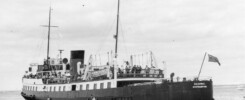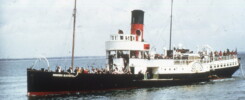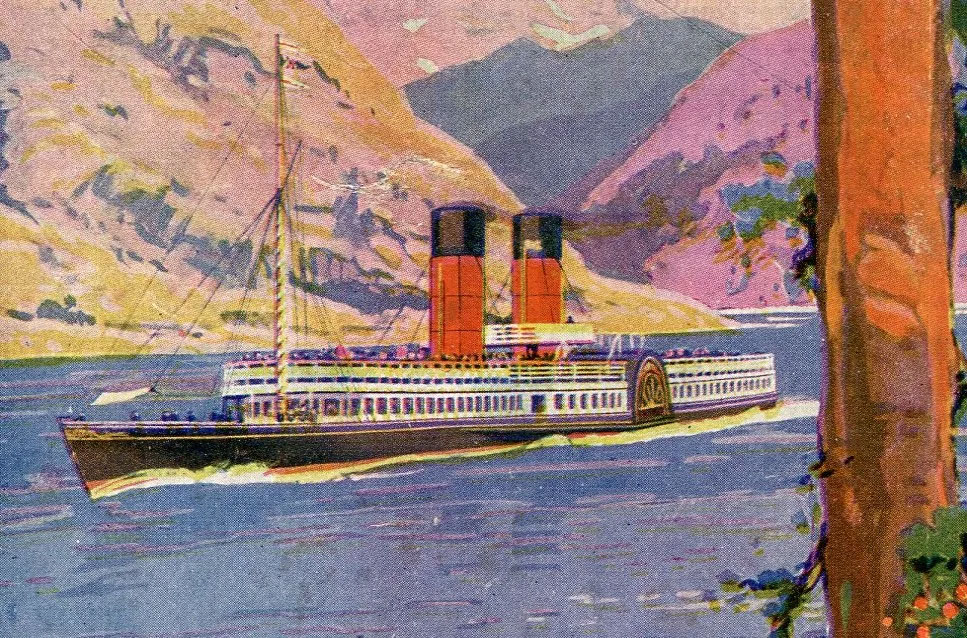
On Thursday 19th August 1926 Columba was scheduled to leave Glasgow (7.11am) on the “Royal Route” for Rothesay (10.15am), Colintraive (10.40am), Tighnabruaich (10.55am), Tarbet (11.55am) and Ardrishaig (12.40pm) setting off for the return (1pm) to Tarbet (1.40pm), Tighnabruaich (2.40pm), Colintraive (2.55pm), Rothesay (3.30pm) and Glasgow (6.30pm).
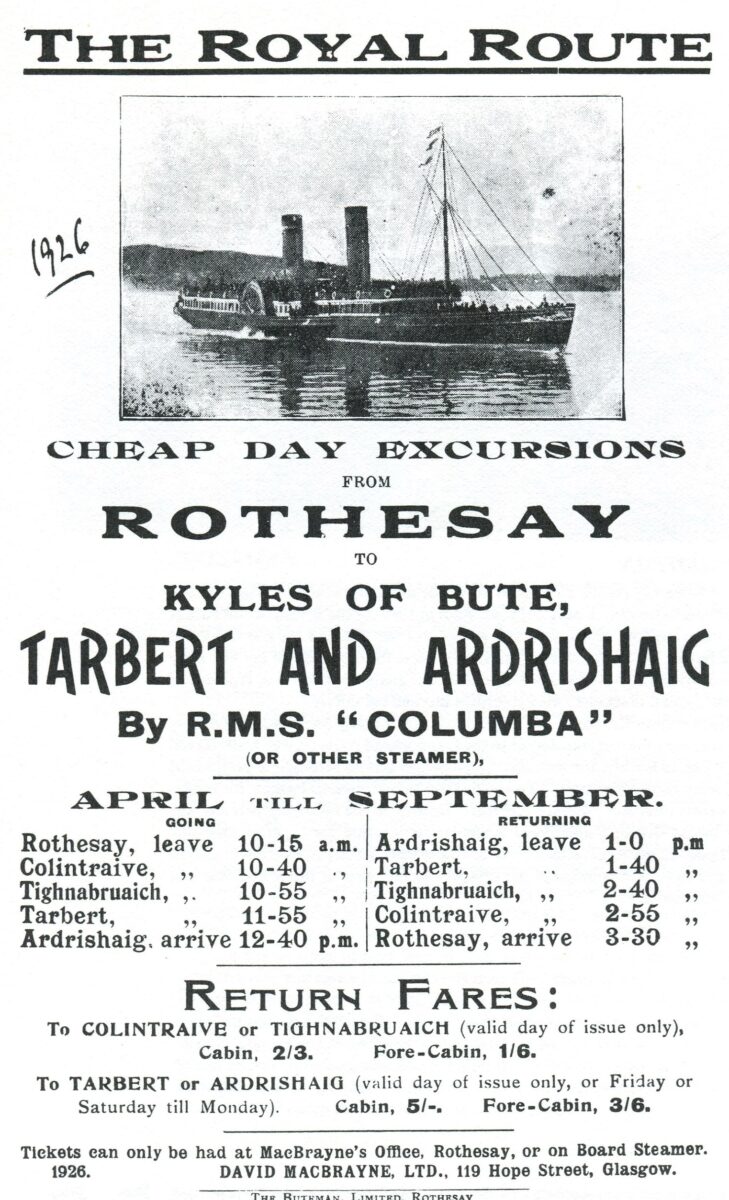
Columba was built in 1878 for the summer service on MacBrayne’s “Royal Route” which was targeted at more moneyed market segments including better off tourists making their way out on the first leg of their journey to the Western Isles as well as day trip market from Glasgow and/or Rothesay.
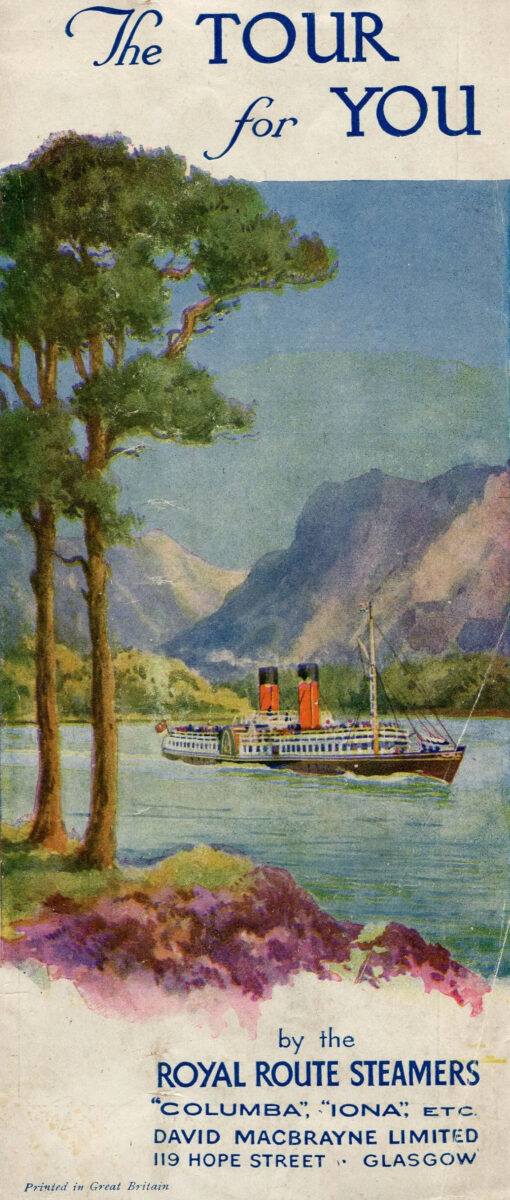
Columba was fitted out with luxurious accommodation and other amenities to a high end “hotel” standard including a barbers shop and a post office. She was one of the first excursion paddle steamers to be built of steel rather than iron and with an overall length of 301ft was a big ship. Contrast that with Cosens’ Empress, built the same year for long excursions on the South Coast, which was just 160ft LOA. Along with La Marguerite, Royal Sovereign and a tiny handful of others, Columba was one of the largest and best appointed excursion paddle steamers ever built for service in the UK.
Columba continued on the same summer route for her whole career, including during the Great War when her trips started and finished at Wemyss Bay because of the boom across the entrance to the Upper Clyde, right up to the end of the 1935 season when she was withdrawn and scrapped at Dalmuir the following March.
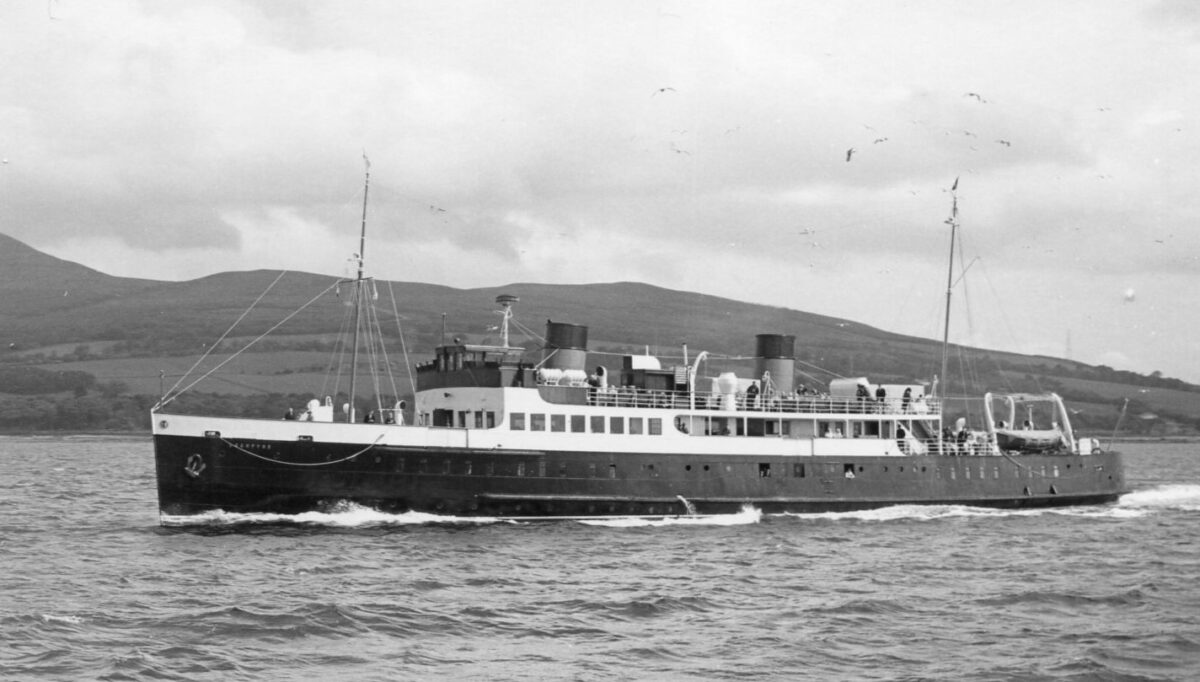
Her place on the “Royal Route” was taken from 1936 by the three funnelled turbine steamer Saint Columba which was herself replaced by the smaller Diesel powered Lochfyne from 1959 which ran the route in both summer and winter.
I remember being on aboard the Jeanie Deans at Port Glasgow in November 1965 waiting to set off for her voyage south and noticing Lochfyne, with her profile of two widely spaced funnels, passing by and thinking then how unusual she looked
It fell to Lochfyne to officially close the route for MacBrayne on 30th September 1969 with the company then absorbed into the wider Clyde fleet and with Lochfyne sold for scrap.
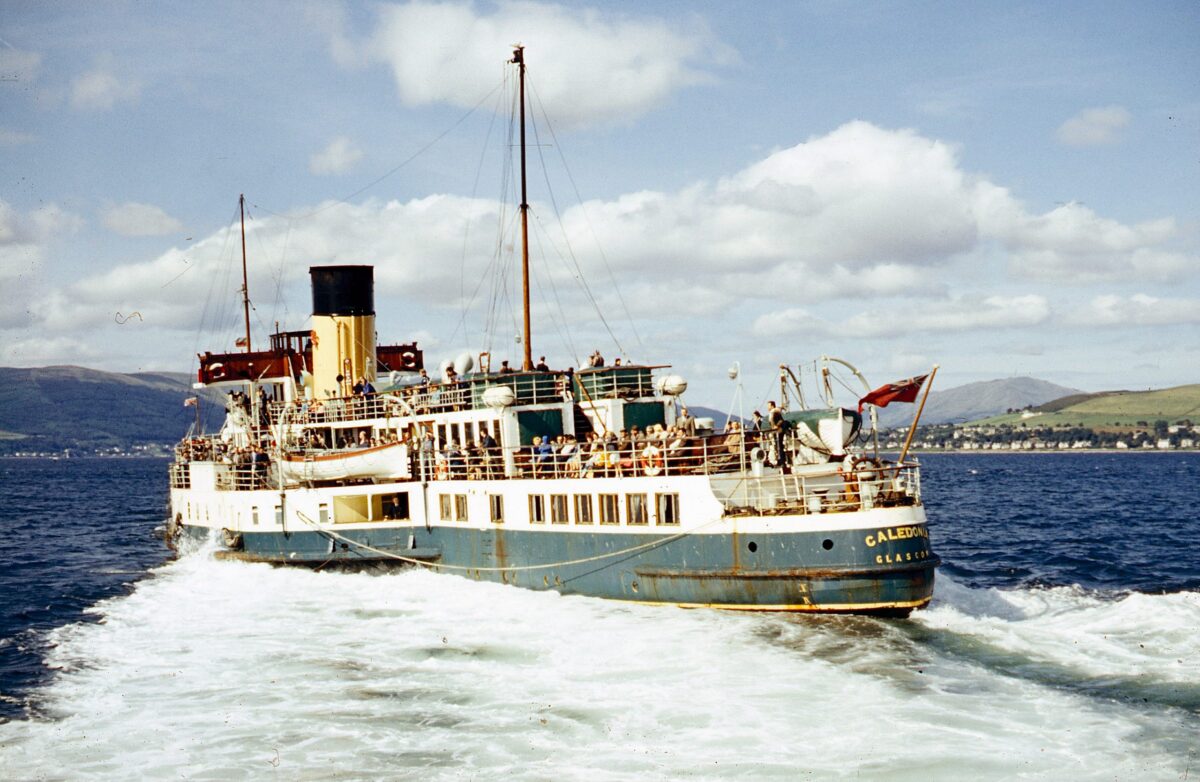
However that was not quite the end of it. After Lochfyne was withdrawn, Caledonia was drafted in to cover the mail service from Gourock to Tarbet for the following week up to 8th October 1969. So it came in as a neat fit that the sailings on part of Columba’s Royal Route had once again been undertaken by a paddle steamer and, what is more, were the last sailings of this particular paddle steamer which was then withdrawn from service and put up for sale herself in October 1969.
I was 18 in 1969 and it was not a good time to be a paddle steamer lover. Excursion services were collapsing, or had collapsed, nationwide as potential customers found other things to do with their time and their spare cash and stayed away. It was a sea change from a day like Thursday 19th August 1926 when Columba was scheduled to sail on the “Royal Route” from Glasgow to Ardrishaig with her bars and dining saloons awash with money.
Kingswear Castle returned to service in 2023 after the first part of a major rebuild which is designed to set her up for the next 25 years running on the River Dart. The Paddle Steamer Kingswear Castle Trust is now fund raising for the second phase of the rebuild. You can read more about the rebuilds and how you can help if you can here.
John Megoran
This article was first published on 19th August 2021.

